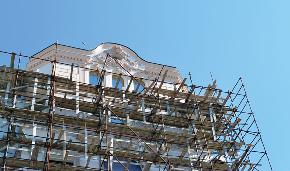Given retail market conditions today, it’s no wonder that adaptive reuse is a hot topic. With retail inventory exceeding demand in many markets, converting retail assets to alternate uses is a viable strategy. Repurposing an existing asset is often faster, more cost-effective, and more sustainable than new development. However, not all buildings are readily adaptable. A properly scoped and executed property condition assessment (PCA) can help identify opportunities and obstacles related to repurposing a retail property and provide a rough understanding of related costs.
PCAs for adaptive reuse vary from standard, ASTM-level PCAs in several significant ways. The scope of an ASTM E2018 PCA includes all major building systems such as building envelope, mechanical/electrical/plumbing (MEP), fire/life safety, structural, and paving. Typically, the cost tables in ASTM PCA reports assume “like-for-like” when assigning a cost to replace components or systems. In a re-use scenario, however, like-for-like is rarely appropriate. When repurposing a building, the “backbone” building systems, such as basic MEP and fire protection systems, must be examined to ensure they support the proposed use. Because adaptive reuse often requires change to system sizing and/or configuration, the requirements of the proposed use must be considered in any assessment project for a structure that will change use.
When assessing the site of an adaptive reuse project, the assessing engineer will look for “fatal flaws” that will limit the viability of the project in that they are either too expensive to overcome or they simply cannot be changed. Examples of these types of deficiencies might include include electrical systems that cannot provide required power to accommodate modern plug loads; buried plumbing systems which are aged or require replacement; slabs which may not be able to support the proposed use of the building, or inadequate site water pressure to support high volume fire suppression systems.
In addition to deficiencies in these “backbone” systems, consideration must be given to demands required by the proposed use. Expanding the scope of the PCA allows for customized evaluations to support decision-making and budgeting for the conversion. Here are three recent examples:
- On a recent project in Arizona, our firm was asked to enhance our PCA with a review of acoustic insulation in the perimeter walls of a tenant space at an in-line shopping center. The space was being converted to a fitness center and the potential operator, based on previous experience, was concerned about sound transmission to adjacent spaces. Our review allowed the development of an accurate budget line item for the necessary acoustic upgrades.
- On a recent acquisition survey in Southern California, we conducted a detailed sewer lateral survey to determine and validate the configuration of waste piping. The property had been subdivided and details of the sewer configuration were unclear at best. In addition, the potential buyer was concerned that the line was compromised given the prior use of the space. Based on the findings in the sewer survey, the city allowed the buyer to go forward with the purchase and alterations of the retail building.
- A recent project in Northwest Indiana involved the reuse of a 110-year-old office building into apartments with ground floor restaurant and retail spaces. The client asked if we could determine whether it was feasible to ventilate a portion of the future ground floor restaurant space upward through the building. Although this was clearly beyond ASTM 2018 standards, it was achieved by close coordination with the client on the potential restaurant configuration and details regarding sizing of ducts and exhaust equipment. This gave our client comfort regarding budget figures for tenant improvement allowances and other elements of lease negotiations.
Of course, the PCA is just one piece of the extensive due diligence required to evaluate a property for adaptive reuse. A qualified consultant can work with owners and developers to bolster their standard site selection and decision-making processes with valuable data gathered through a custom suite of assessments. Depending on the scenario, a consultant may recommend a zoning report, market study, ALTA survey, and/or environmental site assessment. They may also include evaluations by specialists such as historic architecture or accessibility experts.
Each adaptive reuse project is a unique combination of factors, including the characteristics of the existing building, the requirements of the proposed use, and the budget and the timeline of the developer. In order to get the most benefit from their due diligence reports, developers should share as much information as possible regarding their reuse plans and project objectives. It’s important to be realistic about feedback contained in the PCA and other assessments – not every limitation can be overcome. Often, however, a qualified due diligence consultant can provide data and insights to support a successful adaptive reuse project.

















 Copyright © 2024 ALM Global, LLC. All Rights Reserved.
Copyright © 2024 ALM Global, LLC. All Rights Reserved.